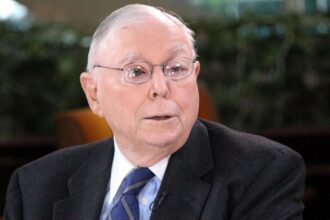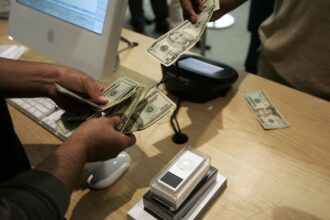Economic Backdrop
We began the year with a mismatch in expectations between the market and the Federal Reserve (“the Fed”) regarding the projected path for interest rates. The Fed had penciled in a target terminal rate between 5-5.25%, which it planned on holding for the remainder of the year. The market’s expectations, reflected in Fed Funds Futures, were that the Fed’s aggressive rate hikes would push the economy into a recession prior to year’s end, forcing the Fed to cut rates by September.
Much has changed in the first 80 days of 2023. Fed funds rate hike expectations briefly rose to 5.75-6.0% as the possible terminal rate, and then in March the adverse effect of the rate hikes hit regional banks. Three banks had to be taken over by regulators, and an investing chill went through the entire banking sector, increasing the odds of a potentially non-shallow US recession. The Fed has just announced a 25 basis point March rate hike bringing rates to 4.75-5.0%, but the market believes there is a roughly 90% chance that this will be the final rate increase. Despite Chairman Powell’s insistence that rate cuts aren’t on the 2023 agenda, market expectations show rate cuts as early as June, culminating in a Fed Funds rate of 3.25-3.5% by mid-year 2024.
What does all this mean? Before we discuss the implications of rate cuts, we should clarify that these expectations are highly volatile and fluid, as evidenced by the dramatic shifts we have already seen in the first quarter. The Fed maintains its own projections, shown in its “dot plot” charts, but experience tells us that actual policy moves rarely ever play out the way the Fed envisions them. That said, the Fed Funds Futures market gives us insight into how the collective intelligence of the market views the present economic outlook.
At the beginning of the year, we laid out 3 implied paths for interest rates and the economy. First, the Fed’s view that the economy would weather rate hikes above 5%, a level that would be maintained through year-end with no cuts until well into 2024 with inflation successfully brought down to 2.5%. The 2nd was the market’s more bearish implied outlook, with the Fed rate hikes proving too aggressive and ushering in a recession that would force rate cuts by end of Q3. A third potential outcome was that the Fed would pause rate hikes at a level under 5%, giving inflation data a few months to show evidence that the rate hikes are working.
Presently, it appears that the market’s expectations that the Fed would push too hard and break something have come to fruition. After inflation metrics in Q4 of 2022 showed signs of promise, early 2023 inflation data has proven more resilient by stalling or even heating up in some components. The Fed’s apparent lack of progress in containing inflation, along with steadfast hawkishness presented in public comments from Fed officials, initially pushed rate hike odds up significantly. That all changed upon the mid-March trio of bank failures, including the second largest in US history in Silicon Valley Bank. The failures were largely due to poor risk management but indirectly attributable to the Fed’s aggressive rate hikes. Simply put, the banks carelessly invested deposit reserves in long-dated Treasuries which lost value rapidly due to the Fed’s rate hikes, and when faced with snowballing customer withdrawals, resulted in significant realized losses.
This duration risk mismatch between reserves and deposits poses a serious risk to the financial sector, and there may be more dominoes to fall. The run on Silicon Valley Bank was rapid and while this particular bank had some idiosyncratic risks due to its unique exposure of having a very concentrated venture capital/early stage company customer base, but there is contagion risk to the rest of the banking sector. Prior to this event, investors were envisioning a recession ushered in due to Fed rate hikes limiting business capital investment and personal spending while working to bring down inflation. However, now we may see a recession without the Fed making progress on the inflation front. Even worse, banks have tapped the Fed’s emergency liquidity facilities to the tune of $300 billion and counting, a sum which has been added to the Fed’s balance sheet, undoing months of quantitative tightening progress. A banking sector meltdown while inflation is still scorching hot would be among the most spectacular failures in economic policy in recent memory, and confidence in the Fed has clearly been tarnished for the time being.
The best-case scenario for 2023 is that the banking contagion is contained and limited to a handful of poorly managed banks and deflationary data finally shows up before the May 3rd Fed meeting. Whether or not we see a reversal of inflation quickly enough is uncertain, however. Goods inflation seems to be trending lower, but despite some resolution of supply chain issues, businesses have been able to maintain high profit margins and pass along those costs to consumers. Consumers, despite their protestations, have kept consuming and have not noticeably altered their buying behavior.
The hottest segment remains the housing sector, which is widely acknowledged to lag by several months, therefore presenting reason to believe lower inflation data has merely been deferred to later in the year. February data showed the first decline in 11 years for house prices, suggesting the persistently high Shelter inflation category is finally easing. At the same time, the bank debacle threatens to undo the limiting effect of higher mortgage rates, possibly ushering in an inflationary buying surge in the housing market as buyers capitalize on the mortgage interest rate pullback.
Services inflation is another elephant in the room, and the Fed does not seem to have an effective answer to underlying wage growth and demographic challenges. With summer travel season approaching, it is hard to find an obvious catalyst for a decline in spending on services such as travel, leisure, and hospitality. The Fed needs to clarify how it will tackle these challenges, as relentlessly pounding rate hikes and praying for unemployment has thus far been completely ineffective.
With continued full employment and strong wage growth, breaking the inflationary cycle appears to be beyond the scope of the Fed. The simple fact is that consumers have cash and the will to spend it. Pandemic stimulus funds have been exhausted, but wage gains and the continued pause on student loan repayments have resulted in excess spending capacity for millions of Americans. The student loan moratorium is however set to expire by end of August, and possibly earlier if the Biden administration’s forgiveness program is resolved in the courts before end of June. With average monthly student loan burdens of $267 and $567 for bachelor’s and master’s degrees, respectively, those outflows will pull down overall demand for goods and services later in the year.
More near-term, the bullish case right now is that the recent bank failures will cause a considerable slowdown in lending, and bank loan volume and economic activity (GDP) are directly correlated so that could be the reason that inflation finally slows and the Fed can declare, or get closer to declaring, victory. At his March 22nd FOMC press conference, Powell suggested this possible outcome, stating “tighter credit conditions can substitute for rate hikes.”
Equity Markets
US Stocks rallied to start the year but have given back all those gains as of mid-March. At the onset of the year, there was a strong argument to be made that for long-term investors, a patient and disciplined approach to equity investing would pay off by year-end once inflation data eased. With full employment, it was hard to envision how we would get anything more than a brief, mild recession. Therefore, the risk of missing the upside seemed to outweigh the downside. The increased potential for a banking sector induced recession has altered that risk-reward tradeoff, at least for now. Banks looked like one of the best sectors to own heading into 2023, as higher net interest margins make financial sector stocks typically among the best performers during rising interest rate environments. With financial sector stocks at roughly 12 times price-to-earnings, they are cheap but could become cheaper when the recent bank failure dust settles, although future earnings will be in question as lower lending volume and tighter regulations are the only certainty now.
The upward shift in recession risk at this moment, when risk free six-month Treasury bonds are yielding over 4.5%, makes the short-term case for owning equities of any kind a bit less attractive. Until the extent of the financial sector contagion is clearer, a prudent, patient approach to equities seems to be the best option.
Developed international stocks are facing similar challenges despite their more attractive valuations. Foreign central banks are way behind the Fed in implementing rate hikes, yet their economies face even higher inflation than the US in many cases. European banks are subject to more stringent regulations than their US counterparts but are not immune from risk, as evidenced by Credit Suisse, which was bailed out by the Swiss government before ultimately being sold to rival UBS a fire-sale price. At the beginning of the year, we cited international indices’ higher concentration in financial sector stocks as a potential source of outperformance; three months later that financial sector exposure looks to be less attractive for the time being. With that said, however, developed international stocks have shown decent relative strength versus US stocks and have provided a good diversifier for globally invested portfolios, and we suggest they be retained for long-term portfolio allocations.
For emerging markets, the value proposition also looks less attractive one quarter into 2023. The Chinese government is targeting 5% GDP growth, which already looks to be too lofty a goal. A US recession would almost certainly assure a downgrade to the export-reliant Chinese economy. Elsewhere, Latin American banks are much less stable than their developed market peers, and we could easily envision the US regional bank contagion spreading to international institutions, which have the added risk of currency valuations.
Fixed Income
US Government bonds looked like a safe bet for stable, but not spectacular, returns at the beginning of the year, with the Fed slated to eventually slow and then pause its rate hikes. That timeline has seemingly been sped up, and bonds are rebounding nicely after a historically poor showing in 2022. The security of risk-free returns just below 5%, while not quite keeping up with inflation, makes for an attractive proposition given the current uncertainty. 2022 left a sour taste in many investors’ mouths but we know that deeply negative years are an anomaly for the US Aggregate bond index and intra-year pullbacks typically provide excellent entry points for investment grade bond exposure.
We are less bullish on high yield bonds, given the uptick in default risk, which remains well below historical average levels. Although financials are only around 3% of the iShares US High Yield ETF (HYG
HYG
Commodities and Alternatives
Risk-off remains the theme in the commodities and alternatives markets. Oil prices have begun trending downward, reflecting the elevated recession risks. The challenges we identified at the beginning of the year for office and even mall REITS – namely, vacancies and high costs of capital – have not gone away. The pockets of outperformance such as leisure and hospitality would be less attractive during a recession and therefore REITs remain a contrarian bet, and most investors may opt for safer income streams such as US Treasuries.
Final Thoughts
Information moves quickly in financial markets, and circumstances can change overnight. The strong start to 2023 had many investors marveling at the resiliency of the US economy, and wondering how the Fed could possibly cool economic growth driven by consumer demand in a full employment environment. A potential banking crisis was clearly not the Fed’s intended path to slowing the economy, but that is the reality we are now staring down. While we still see a path for bounce-back gains in 2023, for the time being, risk mitigation seems to be the most prudent approach.
Read the full article here










